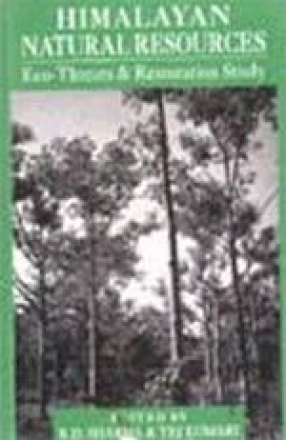Flora of India: New Series: Portulacaceae-Ixonanthaceae (Vol. 3)
Synopsis
The Flora of India covering the present political boundaries of India is planned to be published in 32 volumes dealing with the entire angiosperms from Ranunculaceae to Poaceae. An introductory volume to the Flora of India has been planned which will cover in general various aspects of flora and vegetation and other allied subjects. Bentham & Hooker's system of classification with delimitation and circumscription based on Cronquist's system, except for certain families, is followed in the delimitation of families. Each volume is being demarcated to accommodate 400 to 600 species on an average. Family names are followed as per Nomina Familiarum Conservanda of International Code of Botanical Nomenclature (ICBN). Alternate names, if any, are given in brackets. Family descriptions are elaborate, so as to reflect the important features on world-wide basis. General distribution of the family along with total number of genera and species for the world and India are indicated in the next paragraph. If there are any important monograph, revision or works on allied subject on the family or genera covering or useful for Indian region, these are cited in the following paragraph under 'Literature' in alphabetical sequence of authors. Keys to genera, as well as to lower categories, are strictly dichotomous and of bracketed type. For large families, viz. Annonaceae, Menispermaceae, Brassicaceae, Rutaceae, Fabaceae, Asteraceae, Orchidaceae, Poaceae, etc., it may be necessary to arrange genera and keys to genera segregated into subdivisions of the family, like subfamilies, tribes, etc. The genera are arranged serially in alphabetical sequence. Generic descriptions incorporate important characters of the genus on world-wide basis in a condensed form. The next paragraph contains distribution followed by total number of species in the world and in India. Important selected literature on the genus, with full references form the following paragraph named 'Literature'. The species are arranged serially and alphabetically. The correct name of the species appears in bold letters followed by its author's name and full reference to original publication. Basionyms, if any, are given with full citations. All important synonyms, connecting to Indian flora and Indian works are given. This is followed by Indian names, arranged in alphabetical sequence of abbreviated language names. A detailed taxonomic description of the species is provided for proper identification of the species. Phenological data gathered from herbarium specimens and correlated with those available in literature are indicated as Flowering (Fl.) and Fruiting (Fr.). Distribution of the species is given in two paragraphs. The first paragraph gives distribution in India, including general ecology and statewise distribution. The second paragraph provides world distribution, countrywise and/or phytogeographically. Uses of the species, if any, on economic, medicinal or ethnobotanical aspects are given under 'Notes'. If there are any nomenclatural, taxonomic or phytogeographic interesting aspects these are also given under 'Notes' with literature citation, if any. Plants which are purely cultivated are listed at the end of the family with short descriptions and notes. Those exotic species which have run wild or get propagated naturally are included in the general account. For the sake of uniformity, author's names are mostly abbreviated as given in 'Draft index of author abbreviations' compiled at Kew.
Read more
48.45
43.605
$
51.00 $
Free delivery Wolrdwidе in 10-18 days
Ships in 2-4 days from New Delhi
Membership for 1 Year $35.00
Get it now and save 10%
Get it now and save 10%
BECOME A MEMBER
Books by the same author











Bibliographic information